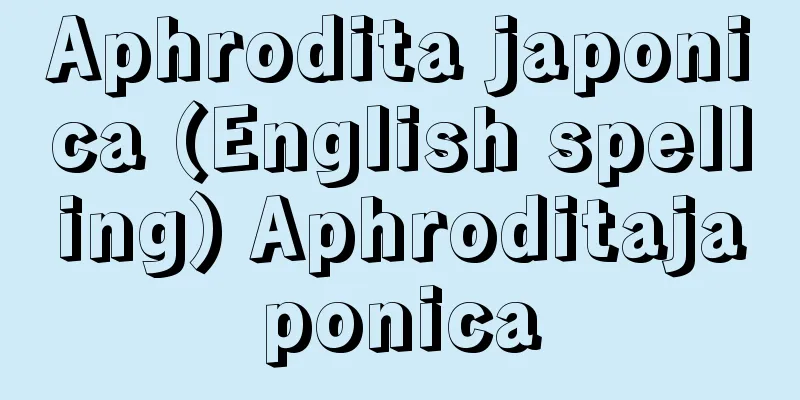Nucleotide - Nucleotide

|
A general term for nucleosides in which phosphate is linked to the sugar moiety via an ester bond. Ribonucleotides have isomers with phosphates at the 2', 3', and 5' sugar positions, while deoxyribonucleotides have isomers at the 3' and 5' positions. A polymer in which nucleotides are condensed at the 3' and 5' positions, i.e., the phosphates are linked by a diester bond between the 3' and 5' positions of adjacent nucleosides, is called a polynucleotide. When natural nucleic acids are enzymatically decomposed, the 3' or 5' isomer is selectively produced depending on the nature of the enzyme used. When ribonucleic acid (RNA) is hydrolyzed with an alkali, nucleotides are obtained as a mixture of 2' and 3' isomers. In this process, cyclic phosphates are formed as intermediates at the 2' and 3' positions, and it is known that the action of various ribonucleases also produces cyclic phosphates as intermediates. When phosphate or pyrophosphate is further condensed to the 5' phosphate, they are called nucleoside diphosphate and triphosphate, respectively. These compounds, including diphosphate (ADP) and triphosphate (ATP), are high-energy phosphate compounds that are directly involved in energy metabolism, and are also components of the coenzymes NAD (nicotinamide adenine dinucleotide) and FAD (flavin adenine dinucleotide) involved in redox reactions, and of substances involved in group transfer reactions (such as coenzyme A and CDP-choline). In the biosynthesis of nucleotides, in the pyrimidine family, the base ring is first formed, followed by the formation of a glycosidic bond, whereas in the purine family, ribose-5-phosphate is successively joined by glycine and other molecules to form the base portion. Deoxyribonucleotides are produced by the reduction of the sugar portion of ribonucleotides. In addition, it has been reported that 3',5'-cyclic AMP (adenosine monophosphate), a special nucleotide, exhibits unique information activity. The enzyme that hydrolyzes the bond between the sugar and phosphate of a nucleotide to produce inorganic phosphate and a nucleoside, is called nucleotidase. [Makoto Kageyama] FoodNucleotides contained in foods are important as components that impart umami. Representative examples are 5'-inosinic acid, the main component of the umami taste of bonito, and 5'-guanylic acid, the main component of the umami taste of shiitake mushrooms. Both umami components are produced as sodium salts using yeast and microorganisms as raw materials, and are called nucleic acid seasonings. A strong umami taste is produced when a small amount (5-12%) of a nucleic acid seasoning is added to the main component, monosodium glutamate. This is called a compound seasoning, and is generally used for soup stock. [Tomomi Kono and Yonago Yamaguchi] "Synthetic Chemistry Series: Synthesis of Nucleosides and Nucleotides" by Yoshihisa Mizuno and Hirohiro Mitsunobu (1977, Maruzen)" ▽ "Modern Nutrition" by Kohei Hayashi (1986, Sankyo Publishing)" ▽ "Development of New Functions for Enzymes" edited by Hideaki Yamada (1987, Kodansha)" ▽ "Nucleic Acid Structure (Part 1)" by Wolfram Zenger, translated by Yoshifumi Nishimura (1987, Springer-Verlag Tokyo)" ▽ "Human Biochemistry" by C.R. Patterson, supervised translation by Takashi Murachi (1990, Kagaku Dojin)" ▽ "Characteristics of Japanese Eating Habits and Diseases" by Toshiro Fujita et al. (1992, Daiichi Publishing)" ▽ "Applied Microbiology" by Yoshiki Tani (1992, Corona Publishing)" ▽ "Standard Biochemistry" by Fumio Arisaka (1996, Shokabo)" ▽ "Biochemistry for Food and Nutrition" edited by Fujino Yasuhiko, written by Katayama Masayuki and Katayama Yoko (1996, Sangyo Tosho)" ▽ "Molecular Nutrition of Nucleotides" by Kimoto Eiji (1997, Kaisei Publishing)" ▽ "Structural Biology" edited by Miura Kinichiro (1998, Asakura Shoten)" ▽ "Ritter's Biochemistry" by P. Ritter (1999, Tokyo Kagaku Dojin)" ▽ "Vought Basic Biochemistry, Volumes 1 and 2, written by D. Vogt et al., translated by Tamiya Nobuo et al. (2000, Tokyo Kagaku Dojin)" ▽ "Biochemistry - Structure and Function of the Human Body" edited by Kimoto Koichi and Goto Kiyoshi, supervised by Hayashi Junzo (2003, Kenpakusha)" [References] | | | | | | | | | | | | | | | | | | | | | | | | | |Source: Shogakukan Encyclopedia Nipponica About Encyclopedia Nipponica Information | Legend |
|
ヌクレオシドの糖部分にリン酸がエステル結合したものの総称。リボヌクレオチドでは糖の2'位、3'位、5'位にリン酸のついた異性体があり、デオキシリボヌクレオチドには3'位、5'位の異性体がある。ヌクレオチドが3'位と5'位で縮合した、すなわちリン酸が相隣るヌクレオシド間の3'位と5'位の間をジエステル結合によって結び付けた重合体を、ポリヌクレオチドという。天然の核酸を酵素的に分解すると、用いた酵素の性質によって3'位または5'位の異性体が選択的に生成される。リボ核酸(RNA)をアルカリで加水分解すると、2'位と3'位の異性体の混合物としてヌクレオチドが得られる。このとき、中間体として2'位と3'位の環状リン酸が形成されるが、諸種のリボヌクレアーゼの作用も同様に環状リン酸を中間体として生ずることが知られている。5'位のリン酸に、さらにリン酸、ピロリン酸が縮合したものを、それぞれヌクレオシドジリン酸、トリリン酸とよぶ。ジリン酸(ADP)、トリリン酸(ATP)をはじめとするこれらの化合物は、高エネルギーリン酸化合物としてエネルギー代謝に直接関与する。また、酸化還元反応の補酵素NAD(ニコチン(酸)アミドアデニンジヌクレオチド)やFAD(フラビンアデニンジヌクレオチド)、あるいは基転移反応に関与する諸物質(補酵素AやCDPコリンなど)中でも、これらのヌクレオチドが構成成分になっている。 ヌクレオチドの生合成は、ピリミジン系ではまず塩基環ができてからグリコシド結合が形成されるのに対し、プリン系ではリボース-5-リン酸にグリシンその他の分子が順次結合して塩基部分ができあがる。デオキシリボヌクレオチドは、リボヌクレオチドの糖部分の還元によって生成する。このほか、特殊なヌクレオチドとして3'・5'-環状AMP(アデノシン一リン酸)が特異な情報活性を示すことが報告されている。ヌクレオチドの糖とリン酸との間の結合を加水分解して無機リン酸とヌクレオシドを生成する酵素をヌクレオチダーゼという。 [景山 眞] 食品食品に含まれるヌクレオチドはうま味を呈する成分として重要である。その代表的なものがカツオのうま味の主成分の5'-イノシン酸とシイタケのうま味の主成分の5'-グアニル酸である。この両者のうま味成分は、酵母や微生物を原料に、ナトリウム塩として製造され、核酸系調味料とよばれている。主成分であるグルタミン酸ナトリウムに少量(5~12%)の核酸系調味料を配合すると強いうま味が出る。これを複合調味料とよび、一般にだし用として普及している。 [河野友美・山口米子] 『水野義久・光延旺洋著『合成化学シリーズ ヌクレオシド・ヌクレオチドの合成』(1977・丸善)』▽『林浩平著『現代の栄養学』(1986・三共出版)』▽『山田秀明編『酵素の新機能開発』(1987・講談社)』▽『ウォルフラム・ゼンガー著、西村善文訳『核酸構造(上)』(1987・シュプリンガー・フェアラーク東京)』▽『C・R・パターソン著、村地孝監訳『ヒューマン バイオケミストリー』(1990・化学同人)』▽『藤田敏郎他著『日本人の食習慣の特徴と疾患』(1992・第一出版)』▽『谷吉樹著『応用微生物学』(1992・コロナ社)』▽『有坂文雄著『スタンダード 生化学』(1996・裳華房)』▽『藤野安彦編、片山真之・片山洋子著『食品・栄養のための生化学』(1996・産業図書)』▽『木本英治著『ヌクレオチドの分子栄養学』(1997・開成出版)』▽『三浦謹一郎編『構造生物学』(1998・朝倉書店)』▽『P・リッター著『リッター生化学』(1999・東京化学同人)』▽『D・ヴォート他著、田宮信雄他訳『ヴォート基礎生化学』上下(2000・東京化学同人)』▽『林淳三監修、木元幸一・後藤潔編著『生化学――人体の構造と機能』(2003・建帛社)』 [参照項目] | | | | | | | | | | | | | | | | | | | | | | | | | | |出典 小学館 日本大百科全書(ニッポニカ)日本大百科全書(ニッポニカ)について 情報 | 凡例 |
>>: Nukus - Nukus (English spelling) Нукус/Nukus
Recommend
Ramsay-Hunt syndrome
…Intercostal neuralgia [Hidehiro Mizusawa]. . . *...
barber (barber's) shop (English) barbershop
…The former is called a barber shop, a barbershop...
Hospitality - Kantai
〘 noun 〙 To entertain with joy; to treat with kind...
Wonton (Wonton) - Wonton
A corrupted form of Honutong. A type of Chinese di...
Joseph Viktor von Scheffel
German novelist and poet. Born in Karlsruhe in so...
Yamauchi [village] - Sannai
A village in Hiraka County in the southeastern par...
Indian Alocasia - Indian Alocasia
... A . cucullata Schott (Chinese taro) has circu...
Aloe hawalltioides - Aloe hawalltioides
…It is found in the wild along the Mediterranean ...
Crataegus oxyacantha (English spelling) Crataegusoxyacantha
…[Hiroshi Aramata]. … *Some of the terminology th...
Benzaisen
Large sailing ships were seen in sea villages from...
Kanze Black Snow
Year of death: 9 December 1627 (26 January 1627) Y...
Flat - Hiraban
A form of commercial paper, the opposite of rolled...
Ripple mark (English spelling)
They are also called sand ripples or sand marks (l...
Milo
…Year of birth and death unknown. Sometimes writt...
Kirkuk oil field - Kirkuk oil field
Located in northern Iraq, this is Iraq's large...


![Helgoland [island] - Helgoland](/upload/images/67cccc538eb5d.webp)






